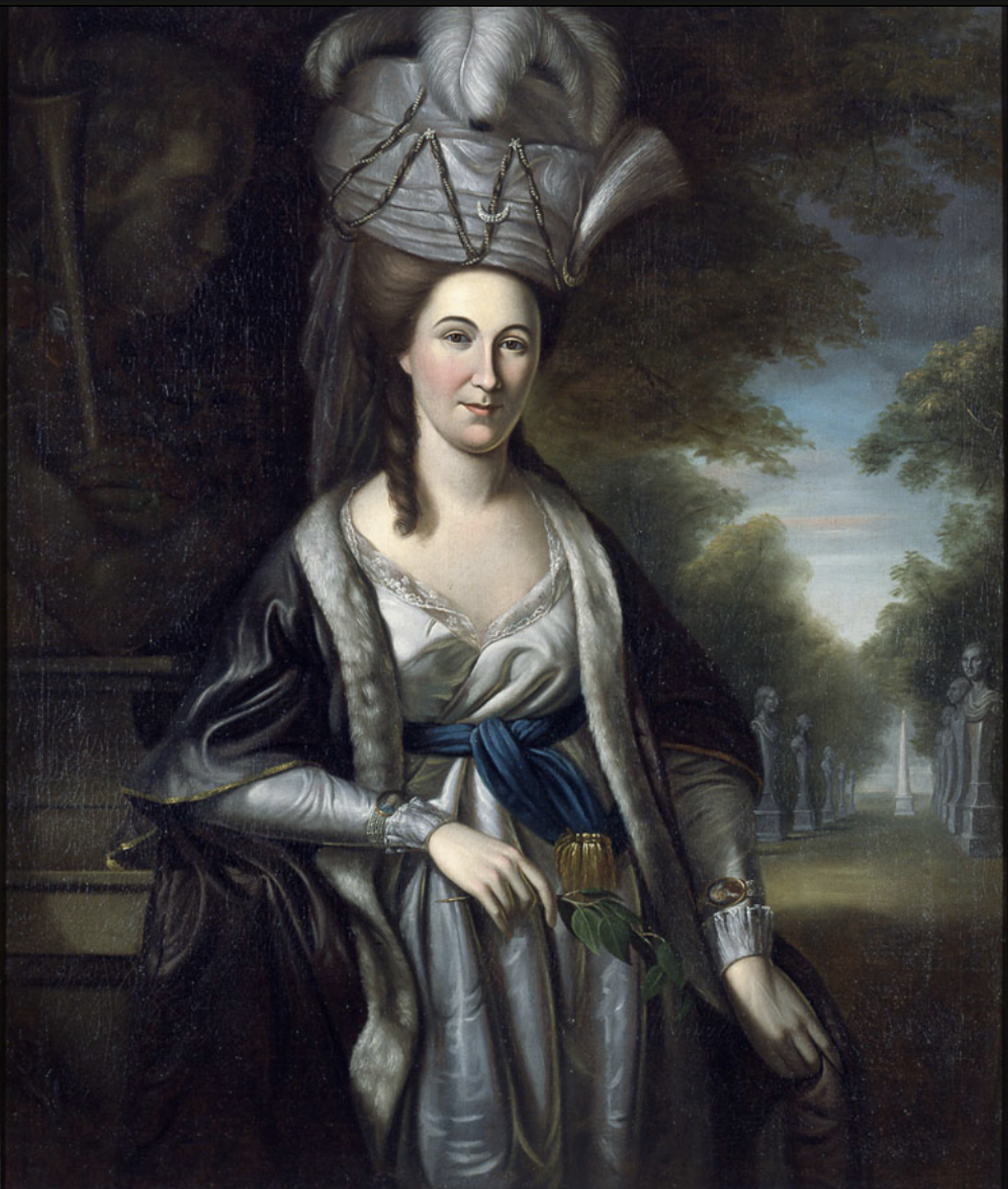One of those history-myths that refuses to die states that American women of every class wore "homespun" to be patriotic during the years surrounding the American Revolution. According to this myth - made popular in the 19thc as later generations looked fondly and imaginatively backwards to their ancestors - these women were paragons of colonial self-sufficiency. They not only herded and sheared sheep, processed, spun, dyed, and wove the wool and likewise processed flax into linen cloth, but cut and stitched by hand every garment worn by their equally patriotic family.
Well, no. Even if there were enough hours in the day, few women possessed the expertise to achieve all this. Most of the steps in 18thc clothing production were performed by highly skilled professional tradespeople, and the majority of the textiles - whether linen, wool, silk, or cotton - worn by Americans, rich or poor, had been produced elsewhere, and imported.
This didn't change with the Revolution. While restrictions to trade limited new imports, there was still plenty of pre-war stock in warehouses and shops. Smuggled goods were also available for those who wished to pay the premium for them. While wartime deprivations might have made the cost of new fabric prohibitive to many families, refashioning and refurbishing, patching and mending had always been acceptable in every class. Fabric was valued, and there was no shame in making a new gown in 1778 from 1750 fabric.
(A further complication: some historians now believe that 18thc references to “homespun” meant that something was made in America, not made in the home. Therefore it could have been fashioned by an American-based professional - a tailor or mantua-maker - from foreign textiles, and still be called homespun. This distinction was blurred and largely lost over time, until the Colonial Revival movement embraced that resourceful colonial housewife.)
For a wealthy woman like Mary White Morris (c1749-1827), above, the Revolution likely had little impact on her wardrobe, and she wasn't wearing homespun, either. Married to entrepreneur, banker, and statesman Robert Morris, Mary was known as a lady who "ruled the world of fashion with unrivaled sway" - at least that part of the fashionable world centered by Philadelphia. (Robert Morris was also an early supporter of Alexander Hamilton, and together they are credited with creating the country’s financial system. You might recall Mr. and Mrs. Morris from their appearances in I, Eliza Hamilton.)
This portrait of Mrs. Morris by Charles Willson Peale was painted towards the very end of the Revolution, around 1782, yet she is shown in casually luxurious splendor. She is wearing fanciful, Turkish-inspired clothing that was the height of French fashion: a lace-trimmed silk sultana, a gown edged with fur, and a silk sash. Her silk headdress, or pouf, is an elaborate concoction of silk, strands of glass pearls, feathers, and paste-jewel ornaments in the shape of stars and a crescent moon, with a trailing veil or scarf.
Yet by following the French fashion for dramatic hair, poufs, and turquerie, Mary Morris was not only following the lead of that international trendsetter queen, Marie Antoinette, but she was making a political statement of her own. The French were America's allies in the Revolution, and without French military assistance, the American cause would not have been successful. Mary's husband was much involved in both the war and creating the new country's government, and among their closest friends was the Marquis de Lafayette. For her, dressing like a Parisian for a portrait was patriotic.
But patriotic fashion reached back from Philadelphia to Paris, too. The French rejoiced along with the Americans in their victory over the British, and French women celebrated by wearing clothing inspired by the new country, or at least named for it. This detail, above right, from a French fashion journal shows one of the latest styles for 1783: Chapeau à la Pensilvaine (Hat in the Style of Pennsylvania).
Thanks to Kimberly Chrisman-Campbell for her assistance and inspiration for this post. For more 18thc French fashion, check out Kimberly's splendid fashion history, Fashion Victims (Yale University Press.)
Above: Mary White Morris by Charles Willson Peale, c1782, National Park Service Museums.
Below: Detail, Gallerie des Modes et Costumes Français. 39e Cahier des Costumes Français, 10e Suite des Coeffures à la mode en 1783. Museum of Fine Arts, Boston.
My latest historical novel, The Secret Wife of Aaron Burr, is now available everywhere. Order here.


